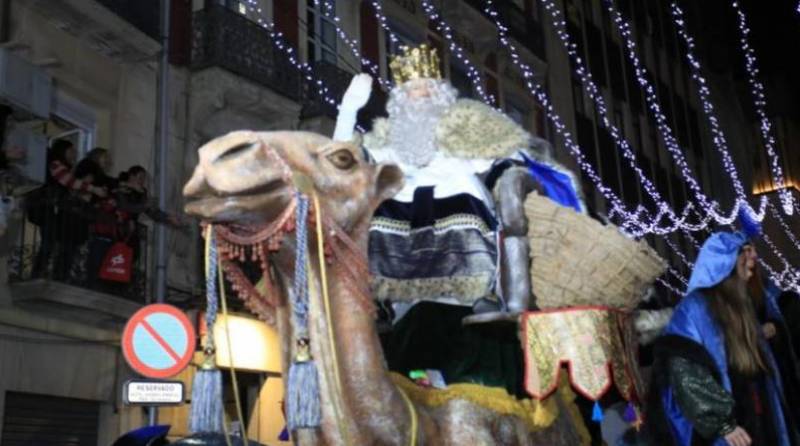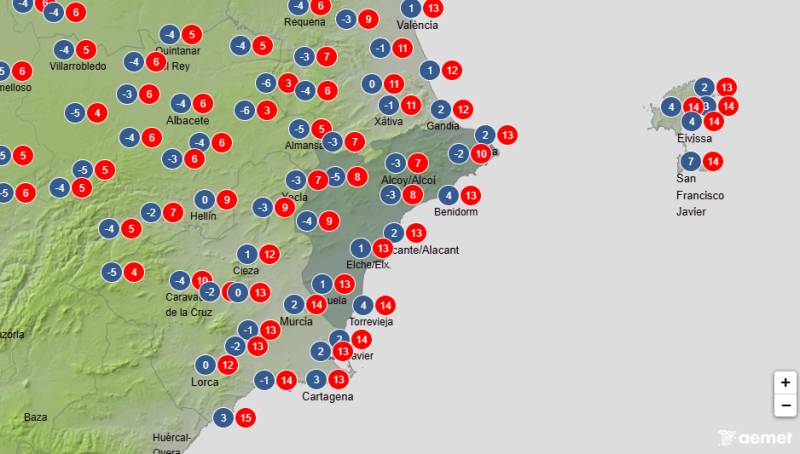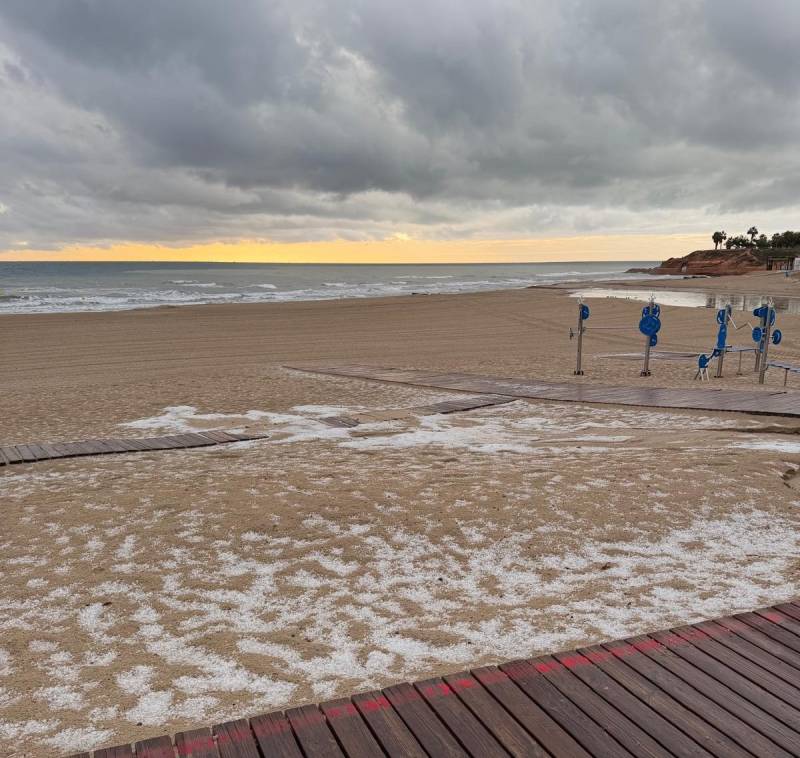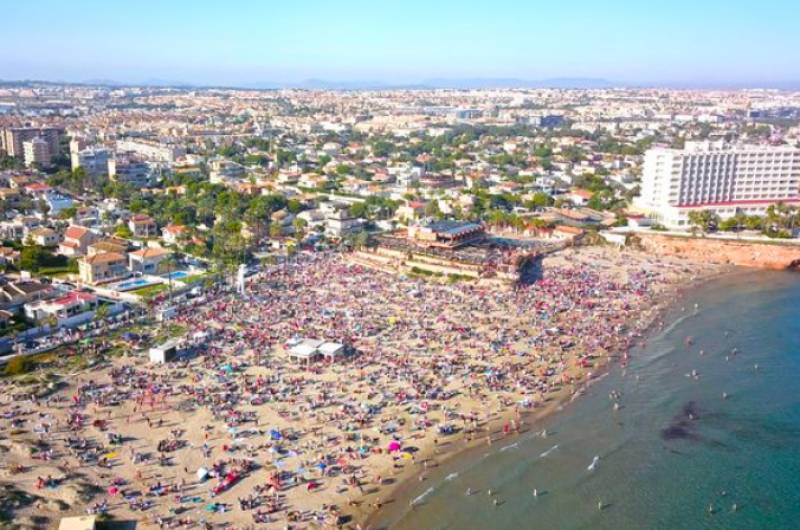

Guidelines for submitting articles to Santa Rosalia Today
Hello, and thank you for choosing Santa Rosalia.Today to publicise your organisation’s info or event.
Santa Rosalia Today is a website set up by Murcia Today specifically for residents of the urbanisation in Southwest Murcia, providing news and information on what’s happening in the local area, which is the largest English-speaking expat area in the Region of Murcia.
When submitting text to be included on Santa Rosalia Today, please abide by the following guidelines so we can upload your article as swiftly as possible:
Send an email to editor@spaintodayonline.com or contact@murciatoday.com
Attach the information in a Word Document or Google Doc
Include all relevant points, including:
Who is the organisation running the event?
Where is it happening?
When?
How much does it cost?
Is it necessary to book beforehand, or can people just show up on the day?
…but try not to exceed 300 words
Also attach a photo to illustrate your article, no more than 100kb

The Caballero Cubierto, Plaza del Salvador, Orihuela
Sculpted by Pedro Jordán Almarza, this figure represents an important part of the Semana Santa celebrations in Orihuela
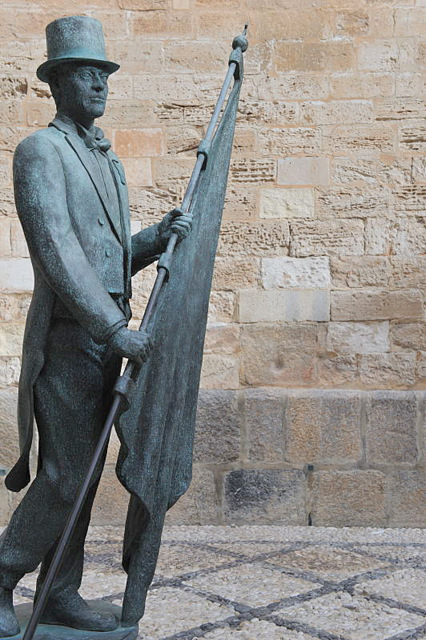 The statue of the “Caballero Cubierto” (the “covered gentleman”) which stands next to Orihuela Cathedral in the Plaza del Salvador is a reminder of one of the more curious aspects of Orihuela’s Easter Week processions.
The statue of the “Caballero Cubierto” (the “covered gentleman”) which stands next to Orihuela Cathedral in the Plaza del Salvador is a reminder of one of the more curious aspects of Orihuela’s Easter Week processions.
On Easter Saturday the Procession of the “Santo Entierro de Cristo” takes place in the evening, in which the mayors of the outlying pedanías of the town participate, along with representatives of the agricultural areas of the municipality, and is led by a man wearing a top hat and tails, the "Caballero Cubierto. "
He is elected by the council each year and changes prior to Semana Santa, it being a tremendous honour to be chosen as the Caballero Cubierto.
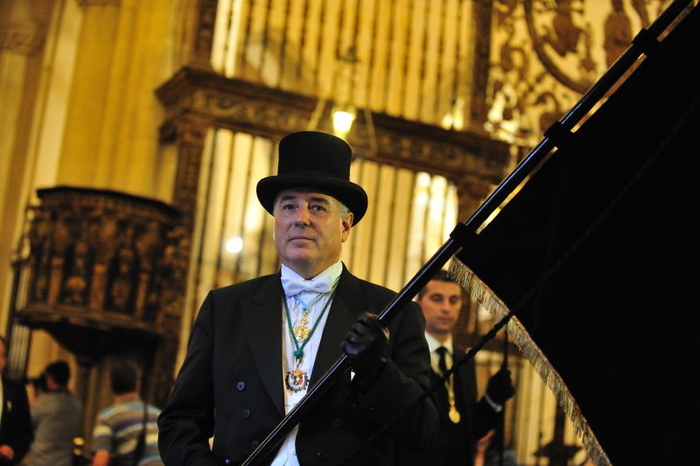 This "covered man" carries the banner of the city, on which is embroidered the motto given to it by King Pedro IV of Aragón in the 14th century, "Semper Prevaluit ensis Vester" (Your blade always prevailed), and reflects Orihuela’s valiant defence during four sieges in the “War of the Two Pedros”, a war of succession between Pedro IV and Pedro I of Castile which lasted from 1356 to 1369.
This "covered man" carries the banner of the city, on which is embroidered the motto given to it by King Pedro IV of Aragón in the 14th century, "Semper Prevaluit ensis Vester" (Your blade always prevailed), and reflects Orihuela’s valiant defence during four sieges in the “War of the Two Pedros”, a war of succession between Pedro IV and Pedro I of Castile which lasted from 1356 to 1369.
On reaching the Cathedral, the procession splits into two, the person honoured to be the “Caballero Cubierto” 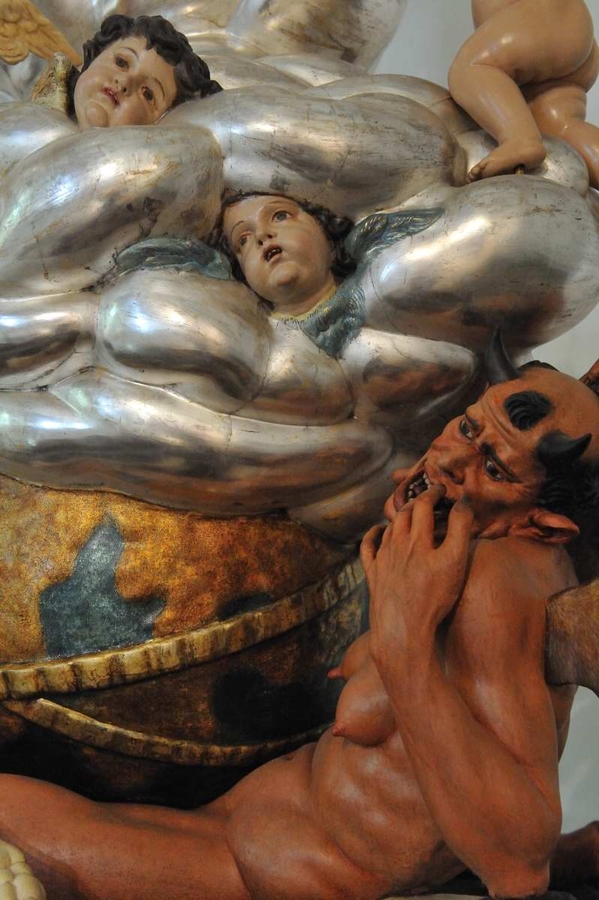 leading the main body inside the Cathedral, and then out of the door on the opposite side of the building, and is the only participant not required to remove his hat, due to the special privilege contained in a papal bull granted in 1620 by Paul V.
leading the main body inside the Cathedral, and then out of the door on the opposite side of the building, and is the only participant not required to remove his hat, due to the special privilege contained in a papal bull granted in 1620 by Paul V.
The second part of the procession features the statue of “La Diablesa”, the she-devil, made by Nicolás de Bussy, which is normally on show in the city’s archaeological museum, and is a stunning 17th century masterpiece showing the triumph of good over evil, and the constant conflict of life and death, heaven and earth, God and Satan. To see the statue throughout the year visit the archaeological museum, which is just a few minutes' walk from the cathedral.
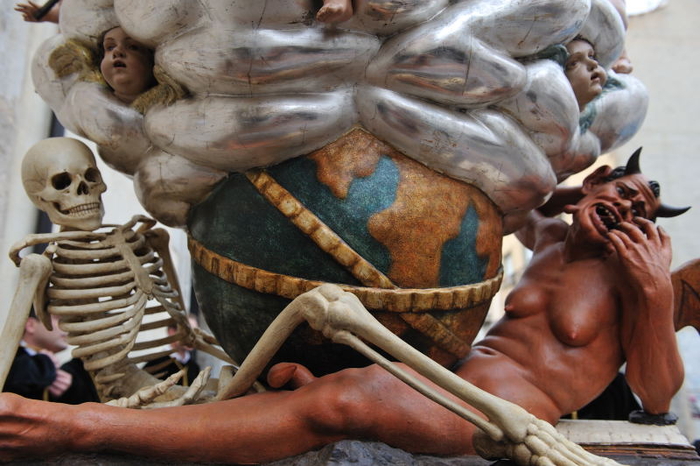 This statue is refused entry into the Cathedral as it represents the devil, albeit in this case taking the form of a she-devil and must wait outside before resuming its place in the parade at the far end of the Cathedral.
This statue is refused entry into the Cathedral as it represents the devil, albeit in this case taking the form of a she-devil and must wait outside before resuming its place in the parade at the far end of the Cathedral.
The statue of the Caballero Cubierto outside the cathedral is a recent addition to the square, dating 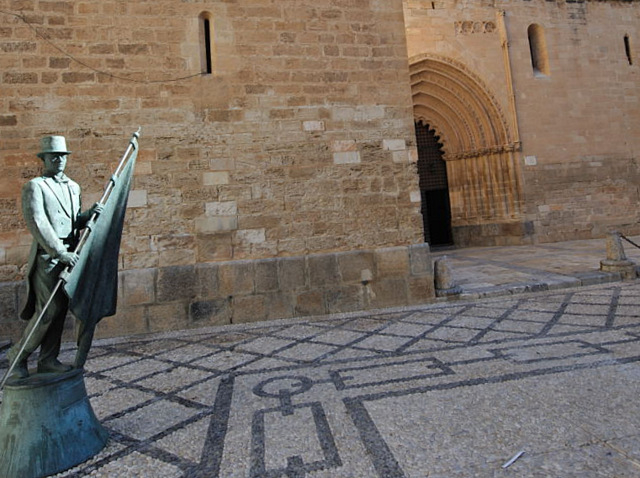 from 2011 and was sculpted by Cartagena sculptor Pedro Jordán Almarza. It is made of bronze and is very close to the Capilla de Loreto, where Orihuela’s Easter Week traditions originated.
from 2011 and was sculpted by Cartagena sculptor Pedro Jordán Almarza. It is made of bronze and is very close to the Capilla de Loreto, where Orihuela’s Easter Week traditions originated.
The plaza itself is paved with pebbles, creating a striking feature, a style of paving used frequently in the more historic towns and cities of Spain.













